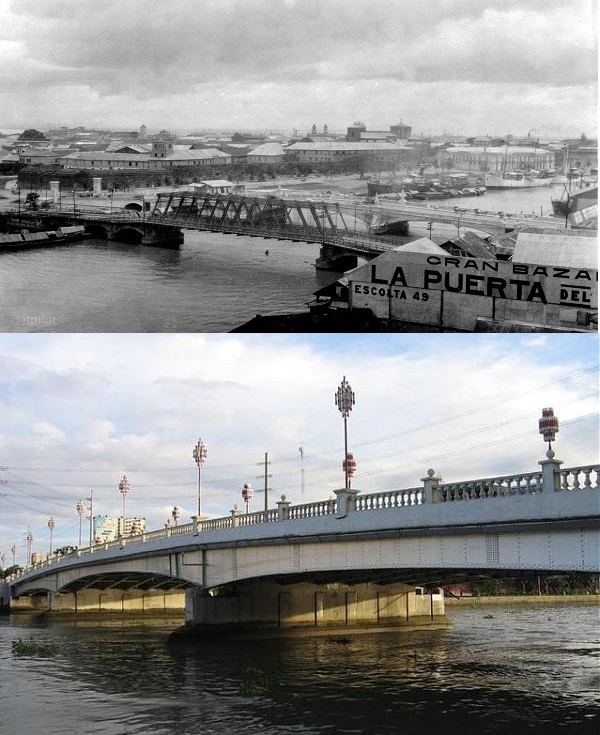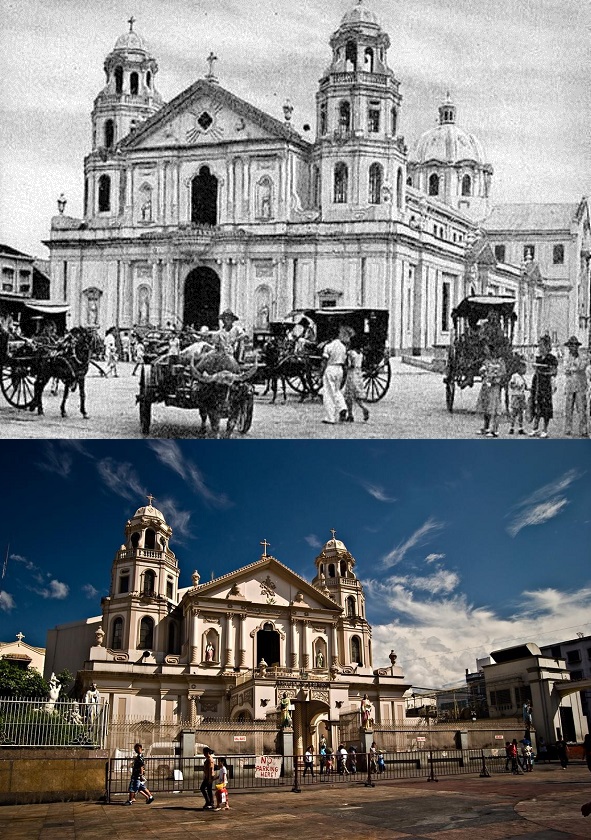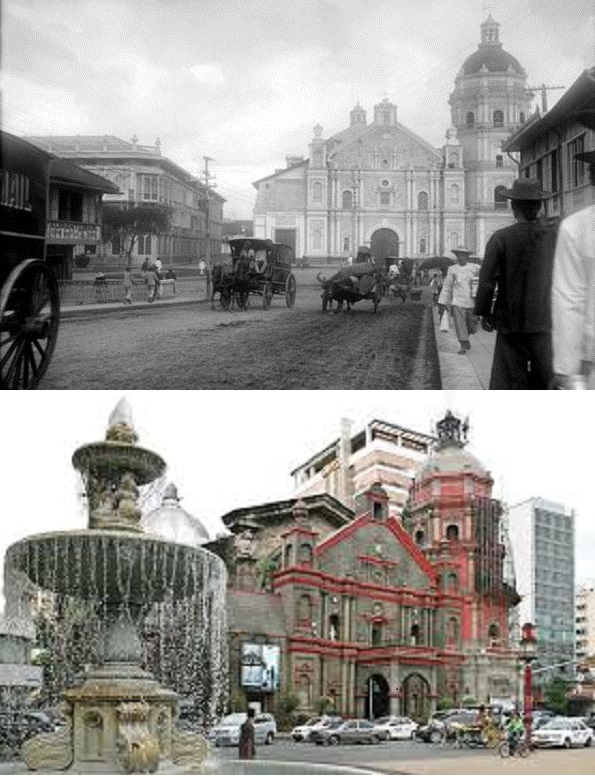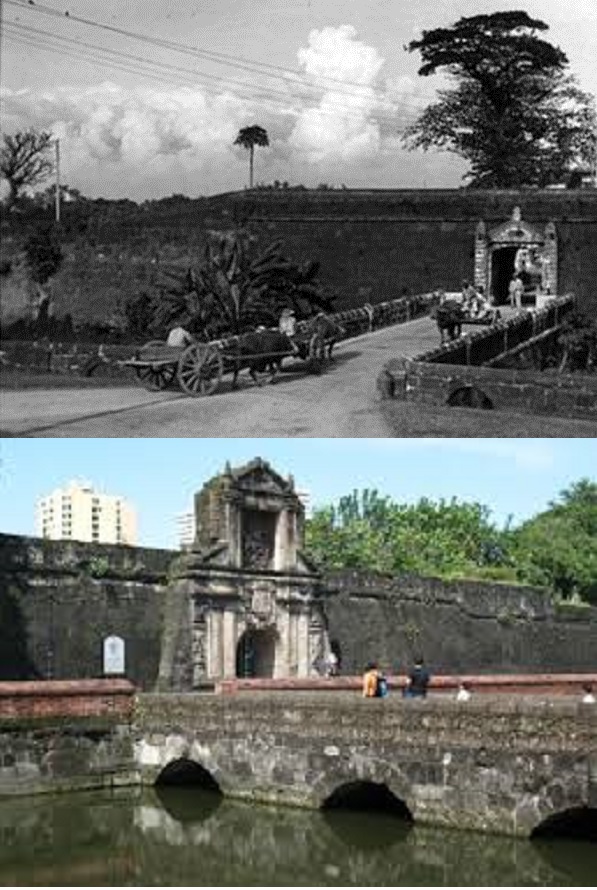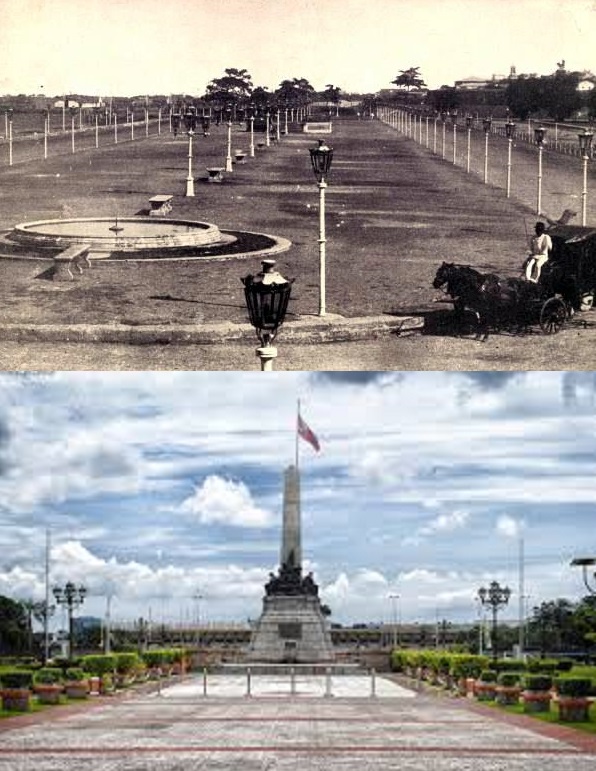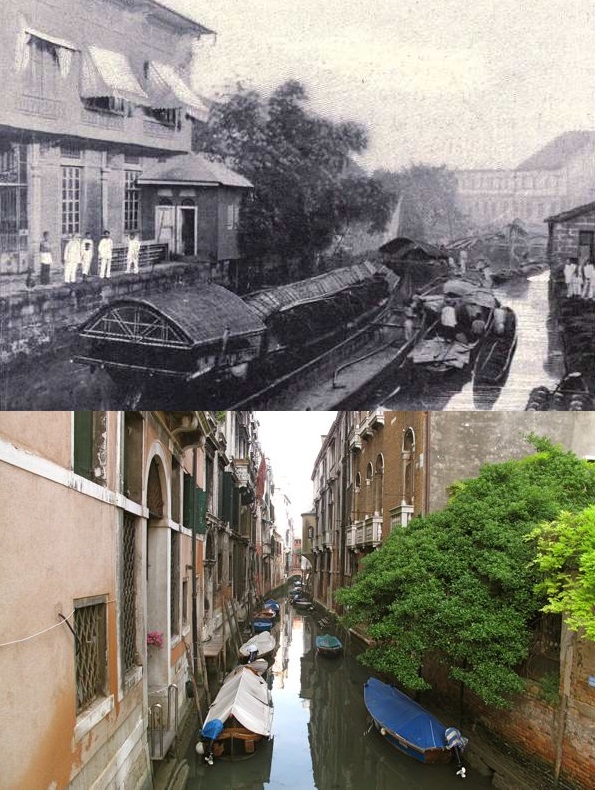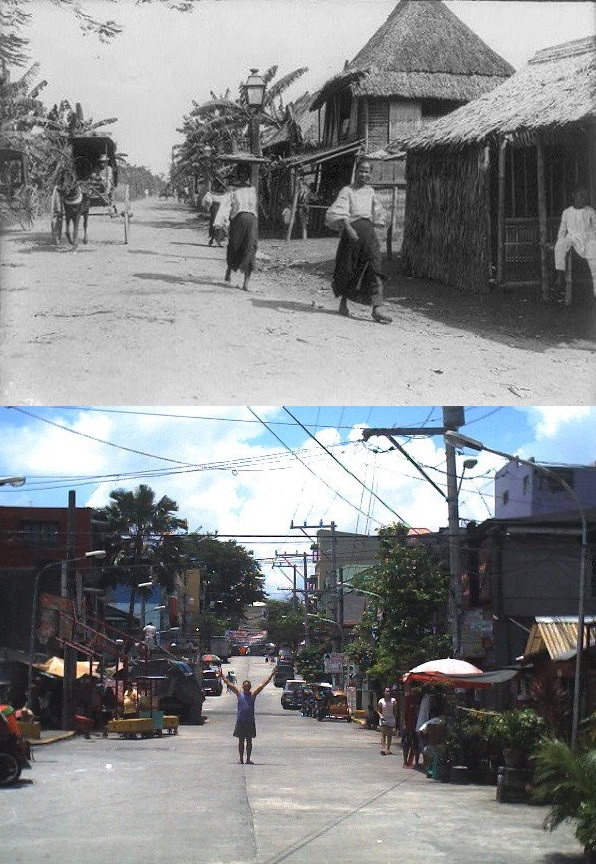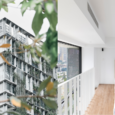When in Manila and you happen to get stuck in traffic along Roxas Boulevard or find it extremely difficult to navigate your way through the crowded streets of Manila, you won’t be able to help but get frustrated and imagine a time when streets were less crowded and getting around the city doesn’t feel like a survival challenge.
A photo of an overcrowded Pasig went viral just recently and that sparked something in me. How awesome would it be to still have more space for trees, cleaner air, and fewer crowds jostling for space in the metro?
It would be nice to look back and see how Manila looked back then.
Here are a few photos of the old and new Manila.
Puente de Espana and Jones Bridge
Puente de Espana (Bridge of Spain) was built in 1875. It used to be called Puente Grande, then a wooden structure built in the 1600s, the first bridge to be constructed over Pasig River, connecting Intramuros to Binondo. It became a stone bridge in 1814, hence the name Puente de Piedra (Stone Bridge) but was damaged by a devastating earthquake on June 3, 1863.
Repairs were finished several years later and in January 1, 1875, the Puente de Espana was opened to the public. Construction for Jones Bridge started in 1920. By this time, Puente de Espana has experienced widening to accommodate more vehicles and pedestrians. It’s also suffered damage caused by a horrible typhoon in 1914, which destroyed its center pier. Jones Bridge was completed and opened in 1921. It was, at the time, so beautifully constructed it rivaled any bridge found in the United States and Europe. Puente de Espana was dismantled soon after.
Quiapo Church
The Quiapo Church is one of the most popular churches in the country. Also called the Minor Basilica of the Black Nazarene, it attracts thousands of devotees on any day, especially during its feast day.
It has endured quite a lot in its rich history: an earthquake in 1645 and fires both in 1791 and 1929.
But its resilience proved strong. Now, it’s still among the most venerated sites in the country.
Binondo
Binondo’s terrain was originally hilly, hence the name, which was derived from the term “binundok.”
Founded in 1594, the Spaniards wanted Binondo to be the permanent settlement for the Chinese immigrants. It was the center of commerce even before World War II.
Now it’s referred to as Manila’s Chinatown and is still a center for business and finance. Lots of shops and restaurants line up its streets.
Intramuros
Everyone knows Intramuros. The Walled City is the oldest core of Manila. It’s also one of the most historic places in the country given the many events it has witnessed.
It was the seat of the Spanish government and the original city of Manila. After suffering terrible damage during the Second World War.
It was declared a National Historical Monument in 1951. It’s also the same time reconstruction of the walls started.
Now, it’s among the most popular places in the country. It houses various churches, like the Manila Cathedral, schools, and other buildings.
Luneta
Luneta will always be in everyone’s minds and hearts because it houses the monument for our national hero, Dr. Jose Rizal.
Rizal Park got its name because it was shaped like the moon (luna). So from Bagumbayan, it was called Luneta.
The park that we so love and are in awe of today has a dark past. It was the place for executions of criminals and enemies of the Spanish government.
This was also where the young Rizal witnessed the execution of the three Filipino priests in 1872, the GOMBURZA.
Manila Canal
Manila Canal could be one of the many reasons why Old Manila was called Venice of the Orient. Take a look at how clean the canal used to be. And the boats lined up give the place a different feel.
While it’s degraded and become so dirty in future years but the local government has, obviously, done a good job in cleaning up.
Sampaloc
You’d be surprised at how rural Sampaloc used to look then. It’s like being in a barrio with its dirt road, quiet environment, and a relaxed atmosphere.
Compare it to the very busy and (often crowded) streets we have today.
What do you think about the old and new Manila?
It would be nice if we can restore some of the cleanliness, order, and relaxing atmosphere our grand parents enjoyed back then, would it?
Old Manila photos courtesy of Philippine-history.org

